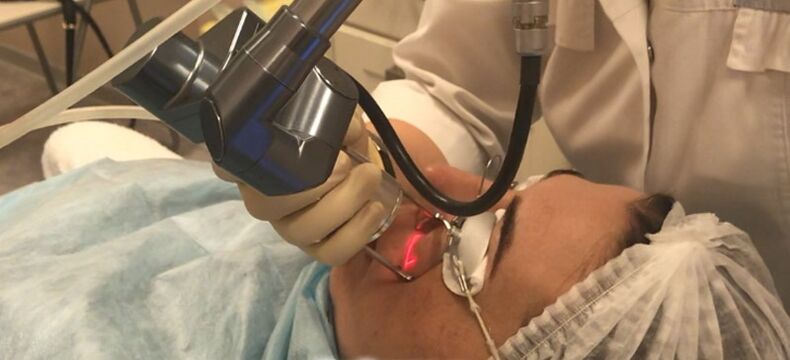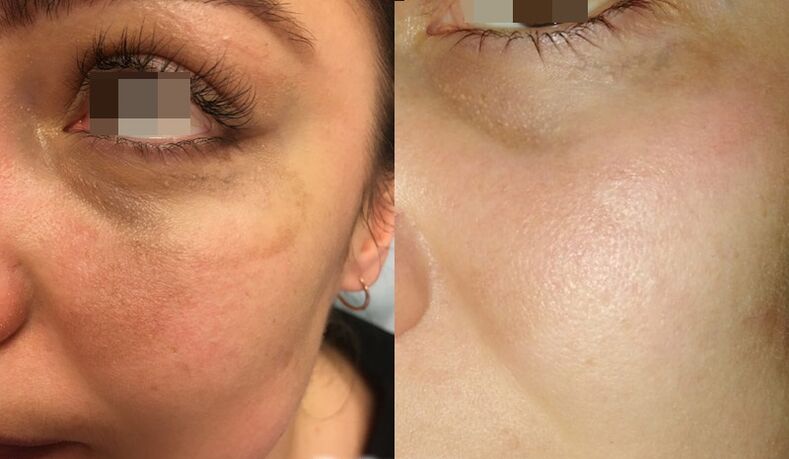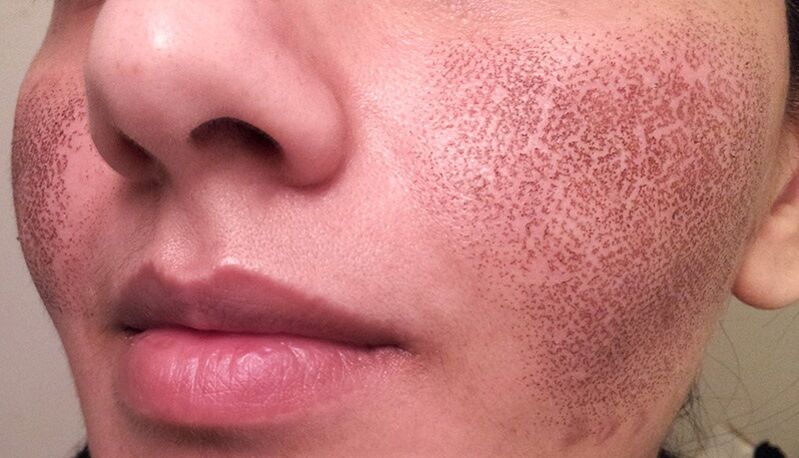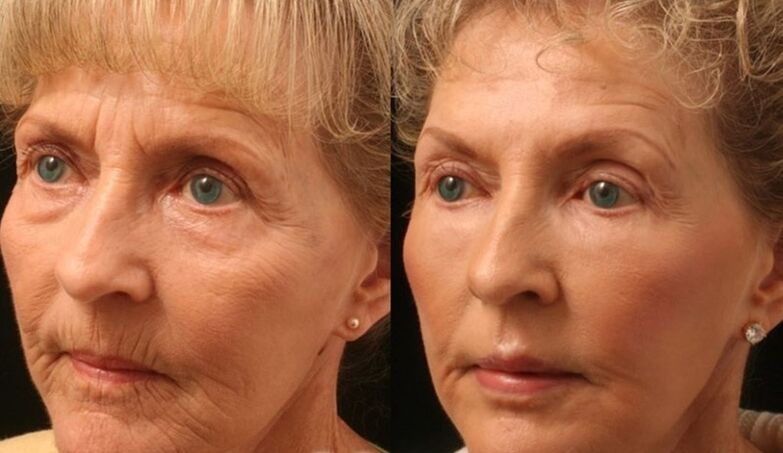
Who doesn't dream of young, beautiful and healthy skin? Unfortunately, aging is an inevitable process. With increasing age, the elasticity is lost, pores enlarge, wrinkles and age spots appear. How do you deal with it and is it possible to do without an operation?
One of the most effective options is fractional laser thermolysis. This is a non-surgical rejuvenation procedure that can solve a wide variety of age-related and aesthetic problems, including smoothing out wrinkles and correcting scars.
How it works?
The photothermolysis process is based on the directional effect of a laser beam that is broken down into several hundred extremely fine beams (the so-called fractions, hence the name). When they hit the target skin area, they cause small, tightly controlled temperature damage.
In response to these microtraumas, a natural regeneration process begins. There is increased production of collagen - a protein responsible for skin tone and elasticity. The damaged layer is completely renewed. As a result - a pronounced rejuvenating effect, which is achieved mainly by activating the natural internal resources of our body.
Indications for fractional thermolysis
With this procedure you can:
- smooth out fine wrinkles;
- Improve skin tone, make it more elastic;
- correct the relief: narrow pores, remove traces of acne (post-acne), small stretch marks, scars after burns or cuts and other scar defects;
- Lightening of pigmentation, melasma (including age-related);
- perform a full-fledged laser peeling - from superficial to total surface renewal.
In general, fractional thermolysis is a universal technique that is suitable for patients of all ages and is considered an ideal option for those who want a rejuvenating effect but are not yet ready to go to a plastic surgeon. You can work on the face, including the sensitive area of the eyelids and the skin around the eyes, as well as on the body - for example the neck, décolleté or hands.

What devices are there
Photothermolysis is carried out with various CO2 and erbium lasers, two of which require special attention:
- Fraxel - has long been a leader in its category and its name is a household name for the fractional rejuvenation process. Today it is considered out of date, although it is very effective. There are several variants (re: store, re: fine, re: pair) that have been developed for different skin types and in different depths.
- Mixto is a new generation laser and today's "gold standard". It differs from Fraxel in terms of its wavelength and also uses a special trajectory of the rays. For this reason, it surpasses its outstanding predecessor in every respect: the process is more convenient and safer, fewer sessions are required and recovery is faster.
There are also numerous analog devices, mostly of Asian origin. They may be similar to Fraxel and Mixto in terms of their operating principle, but are always inferior to them in terms of safety, as they do not have such a precise setting for fractionation, intensity and penetration depth of the jet.
How is the procedure
The session begins with a consultation with a beautician, in which the indications and other nuances are determined. No special training is required, so you can start working with the laser straight away:
- The first step is to cleanse the skin. An anesthetic (usually a lidocaine-based gel) is then applied to the target area.
- The patient and the beautician wear special glasses to protect the eyes from accidental laser hits.
- Next, the doctor adjusts the device - sets the depth of penetration, the power in joules, the pulse rate and other parameters. They are selected according to the problem to be solved.
- Then the beautician slowly moves the manipulas over the desired skin area and supplies them with the same light fractions. This can be quite uncomfortable (depending on the individual pain sensation), but is generally bearable - most patients describe their sensations as a slight tingling or burning sensation.
- The entire process, without preparation, takes about 20 minutes, the exact time depends on the size of the treated area. Immediately after completion, a soothing cream is applied to the face. You can go home and get back to your usual routine with minimal restrictions.
How long does the rehabilitation after fractional thermolysis take and how do you take care of your skin during this time?
Reddening of the face, sometimes slight swelling, remains for up to 24 hours after the session. It looks like what happens when a person is lightly sunburned. Don't be afraid, this is a natural reaction that indicates the start of the rejuvenation mechanism.

Characteristic brown spots appear the next day. And on the third day, another indicator of the changes that have begun appears - the micro-peeling of the skin (peeling of old surface particles), but it passes quite quickly. The tan can persist for 1-2 weeks after the session, i. e. the effect of the tan.
There are few restrictions after the procedure, but it is extremely important to keep them in mind, otherwise there is a risk not only not to achieve the desired effect, but also to suffer complications:
- For 2-3 weeks you can not sunbathe, not even in the solarium, as well as in the bath / sauna (you can on the evening before the session). At the same time, the fractional thermolysis itself is only carried out in the time when there is no active sun.
- For the first few weeks, moisturizing cosmetics (a light cream that does not clog the pores) should be applied to the treated area.
- The treated skin must be protected from strong mechanical stress. Any peelings, peelings or creams with acids are forbidden until they have completely healed. Under no circumstances should you peel off peeling flakes, intensely scratch or rub the area where the laser thermolysis was carried out.
The rejuvenating effects grow and peak within a month. To achieve a full result with the Fraxel laser, 3-6 procedures are required in most cases. Mixto copes with minor defects in 1 session, with more serious ones - in 2-3. The interval between them is several weeks so that the skin has time to fully recover.

The end result has no "limitation", but it is logical that the condition of the skin deteriorates over time under the influence of age and external factors.
Contraindications, Complications, and Side Effects
Like other methods of hardware correction, fractional thermolysis is not performed in the following cases:
- oncological diseases;
- Epilepsy;
- inflammatory processes of the skin in the target area (neurodermatitis, psoriasis, atopic dermatitis);
- fresh herpes eruptions;
- acute infectious diseases;
- recent midline or deep chemical peels, mechanical dermabrasion;
- Pregnancy and lactation.
As for complications and side effects, the most common pigmentation is in the treated area. Fraxel, other previous generation lasers, can cause rather severe burns to deep scars with incorrect settings. Mixto doesn't cause such problems.
Nevertheless, the effectiveness and safety of the procedure still largely depends on the beautician: the doctor must understand exactly what, why and how to proceed with such a powerful device. Therefore, protection against complications and other undesirable consequences is very simple - just contact an experienced specialist who knows how to use modern lasers.
How much does fractional thermolysis cost?
The cost of the service depends on several factors: the brand of the device used for laser correction, the volume of the treated area, the duration of the course and the qualification of the specialist. Ask your beautician for the exact amount.


























